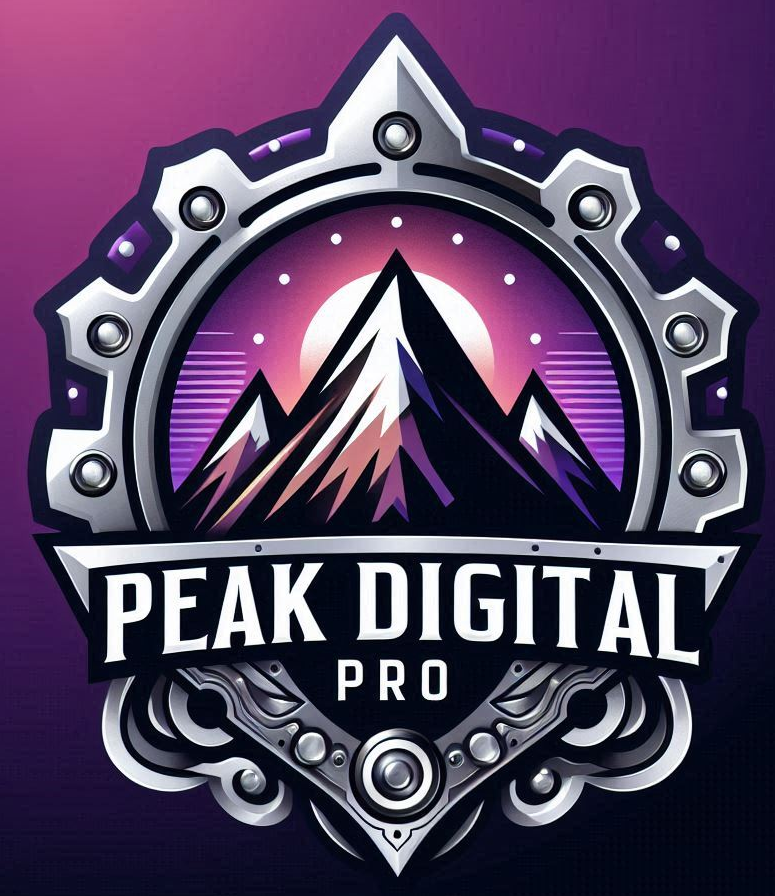Master Social Media Marketing Basics to Boost Your Business
Social media marketing might look easy, but getting real results takes more than just posting pretty pictures or clever captions. Nearly 73 percent of marketers say their efforts through social media have been ‘somewhat effective’ or ‘very effective’ for their business , and yet so many still miss the mark completely. What really sets apart the top performers is not just flashy content, but a strategy rooted in knowing exactly who their audience is and how to truly connect with them.
Table of Contents
Quick Summary
| Key Point | Explanation |
|---|---|
| 1. Define Your Target Audience | Understanding your specific audience helps create focused marketing efforts that resonate and drive engagement. |
| 2. Choose Appropriate Social Media Platforms | Select platforms that align with your audience demographics and business goals to enhance marketing effectiveness. |
| 3. Develop a Strategic Content Plan | Create a content calendar and balance various content types to engage your audience consistently while avoiding over-promotion. |
| 4. Engage Authentically with Your Audience | Active interaction through personalized responses builds community and enhances brand loyalty, leading to better engagement rates. |
| 5. Regularly Analyze and Adjust Strategies | Continuously review performance metrics to refine approaches based on data insights, ensuring your strategy remains relevant and effective. |
Step 1: Define Your Target Audience
Defining your target audience is the foundational step in creating a successful social media marketing strategy. Without a clear understanding of who you are trying to reach, your marketing efforts will be scattered and ineffective. This critical process involves deeply understanding the specific group of people most likely to be interested in your products or services.
To begin defining your target audience, start by examining your current customer base. Look at existing demographic information such as age range, gender, location, income level, and professional background. Analyze their purchasing behaviors, interests, and online engagement patterns . These insights provide a starting point for creating a comprehensive audience profile.
Next, conduct thorough market research to validate and expand your understanding. Utilize tools like Google Analytics to gather detailed insights about your website and social media visitors. Examine the analytics dashboards to understand key metrics such as:
- Visitor age and gender distribution
- Geographic locations of your audience
- Devices and platforms they use most frequently
- Times of day they are most active online
Complement these digital insights with direct research methods. Consider creating customer surveys, hosting focus groups, or conducting interviews with existing clients. These qualitative approaches can reveal deeper motivations, pain points, and preferences that raw data might not capture.
As you compile this information, develop a detailed customer persona that represents your ideal target audience. This persona should be more than just a collection of statistics – it should feel like a real person with specific needs, challenges, and aspirations. Give this persona a name, imagine their daily routine, and understand what drives their purchasing decisions.
Remember that target audience definition is not a one-time task. Markets evolve, consumer behaviors shift, and your business will change. Regularly revisit and refine your audience understanding, treating it as a dynamic process of continuous learning and adaptation. By maintaining a precise, nuanced view of who you are marketing to, you’ll create more resonant, effective social media marketing campaigns that truly connect with your potential customers.
Step 2: Choose the Right Social Media Platforms
Choosing the right social media platforms is a strategic decision that can significantly impact your marketing effectiveness. Not all platforms are created equal, and what works for one business might be completely ineffective for another. Your goal is to select platforms that align perfectly with your target audience, business objectives, and content capabilities.
Platform selection begins with understanding the unique characteristics of each social network . Facebook offers broad demographic reach with robust advertising tools, Instagram excels in visual storytelling, LinkedIn connects professional networks, Twitter provides real-time engagement, and TikTok captures younger audiences through short-form video content. Each platform has distinct strengths and audience expectations that require tailored approaches.
Here is a comparison table of major social media platforms to help you choose the best fit for your business strategy.
| Platform | Core Strengths | Audience Demographics | Best For |
|---|---|---|---|
| Broad reach, robust ads | All ages, especially 25-54 | Community building, paid ads | |
| Visual storytelling | Younger users, 18-34 | Visual brands, influencers | |
| Professional networking | Professionals, B2B, 30-50 | B2B, industry thought leaders | |
| Real-time conversations | Wide range, urban, 18-49 | News, fast engagement, updates | |
| TikTok | Short-form video, trends | Teens & young adults, 13-29 | Viral content, creative brands |
Carefully evaluate your target audience demographics against platform user data. If you are targeting professionals aged 30-50, LinkedIn and Facebook might be ideal. For businesses targeting younger consumers or visual brands, Instagram and TikTok could provide better engagement. Learn more about expanding your online visibility to complement your platform strategy.
Consider your content creation capabilities and resources. Video production requires different skills compared to written posts or graphic design. Some platforms demand high-quality, frequent content, while others are more forgiving. Assess your team’s skills, available time, and budget for content creation . It is better to excel on two platforms than to spread yourself thin across five.
Do not overlook platform-specific engagement metrics. Track not just follower count, but also engagement rates, comment quality, and conversion potential. Some platforms might have fewer followers but higher-quality interactions that drive actual business results. Tools like Google Analytics and native platform insights can help you understand these nuanced performance indicators.
Remember that platform selection is not a permanent decision. As your business evolves and social media landscapes change, remain flexible. Regularly review your platform performance, be willing to experiment, and adjust your strategy based on real data and audience feedback. The most successful social media marketing approach is one that remains dynamic and responsive to your business needs.
Step 3: Develop Your Content Strategy
Developing a robust content strategy transforms random social media posts into a powerful marketing tool that drives engagement and builds brand loyalty. Your content strategy serves as a roadmap that guides what you create, when you publish, and how you connect with your target audience across different social media platforms.
Content creation starts with understanding your audience’s needs and interests . Building upon the target audience research from previous steps, craft content that solves problems, answers questions, or provides entertainment. This means going beyond promotional messages and creating genuine value for your followers. Think about the types of content that will resonate most strongly – whether that’s educational tutorials, behind-the-scenes glimpses, customer success stories, or industry insights.
Learn advanced content marketing techniques to elevate your social media approach. Develop a consistent content mix that balances different formats and purposes. A good rule of thumb is following the 80/20 principle: 80% of your content should inform, educate, or entertain, while 20% can directly promote your business. This approach prevents your social media channels from feeling like constant sales pitches.
Establish a content calendar to maintain consistency and strategic planning . This does not mean rigidly scheduling every post, but creating a flexible framework that ensures regular, thoughtful content delivery. Consider key elements like posting frequency, optimal posting times based on audience analytics, and thematic content pillars that align with your brand identity. Tools like Hootsuite or Buffer can help streamline this process, allowing you to schedule posts in advance and maintain a steady content flow.
Quality trumps quantity in social media marketing. Each piece of content should be carefully crafted to meet specific objectives. Invest time in creating high-resolution images, compelling captions, and authentic messaging that reflects your brand’s unique voice. Pay attention to current trends and platform-specific best practices, but always filter them through the lens of your specific audience and business goals.
Finally, remember that a content strategy is not set in stone. Regularly review your performance metrics, track engagement rates, and be prepared to pivot. The most successful social media strategies remain flexible, learning and adapting based on real audience feedback and changing market dynamics.

Step 4: Create and Schedule Your Content
Creating and scheduling content is the execution phase of your social media marketing strategy. This step transforms your carefully developed plans into tangible, engaging posts that will connect with your audience and drive business growth. The key is to blend creativity with strategic planning, ensuring your content looks professional and reaches your audience at the most opportune moments.
High-quality content begins with understanding the specific requirements of each social media platform . Each network has unique formatting preferences, optimal image sizes, and content styles. Instagram demands visually stunning imagery, Twitter requires concise messaging, LinkedIn expects professional and informative posts, and Facebook supports a more diverse content mix. Invest time in creating platform-specific content that looks native and authentic.
Explore our comprehensive content marketing calendar guide to streamline your content creation process. When producing content, focus on visual consistency. Develop a color palette, use similar filters, and maintain a cohesive brand aesthetic across all platforms. This visual uniformity helps build brand recognition and professionalism.
Scheduling tools are critical for maintaining consistent social media presence . Platforms like Hootsuite, Buffer, and Sprout Social allow you to plan and automate your content distribution. These tools provide insights into optimal posting times, help manage multiple social media accounts simultaneously, and enable you to prepare content in advance.
This table provides an overview of essential tools for creating, scheduling, and tracking your social media content effectively.
| Tool Name | Main Purpose | Key Features |
|---|---|---|
| Hootsuite | Content scheduling/management | Schedule posts, manage multiple platforms |
| Buffer | Content planning/scheduling | Queue posts, basic analytics, team collaboration |
| Sprout Social | Scheduling & analytics | Analytics reports, multi-account management |
| Google Analytics | Performance tracking | Measures traffic, tracks social-to-website ROI |
| Native Platform Insights | Data analysis | Engagement, reach, audience demographics |
Be strategic about content variety. Mix different types of posts including educational content, behind-the-scenes glimpses, customer testimonials, product showcases, and interactive elements like polls or questions. This diversity keeps your audience engaged and provides multiple touchpoints for interaction. Always include a clear call-to-action that guides followers toward your desired outcome, whether that is visiting your website, signing up for a newsletter, or making a purchase.
Remember that scheduling is not about mindless automation. Regularly review and adjust your content strategy based on performance metrics. Monitor engagement rates, track which types of posts generate the most interaction, and be willing to experiment. Social media is dynamic, and the most successful marketers remain flexible and responsive to audience feedback.

Step 5: Engage with Your Audience and Monitor Performance
Engaging with your audience and monitoring performance transforms social media from a broadcast channel into an interactive, relationship-building platform. This critical step moves beyond content creation, focusing on building genuine connections and understanding the real impact of your marketing efforts through detailed performance analysis.
Audience engagement requires consistent, authentic interaction . Respond to comments promptly and thoughtfully, showing that real people stand behind your brand. Do not rely on generic, automated responses. Take time to craft personalized replies that demonstrate you are listening and genuinely care about your audience’s thoughts and experiences. Ask follow-up questions, share additional insights, and create a sense of community around your brand.
Discover advanced content optimization strategies to enhance your audience interactions. Performance monitoring starts with understanding key metrics across different platforms. Each social media network offers native analytics tools that provide insights into post reach, engagement rates, follower growth, and audience demographics. Google Analytics can also track how social media traffic translates into website visits and potential conversions.
Develop a systematic approach to performance tracking . Set specific, measurable goals for your social media marketing. These might include increasing engagement rates by 20%, growing follower count, improving click-through rates, or generating a certain number of leads. Use platform-specific analytics to track these metrics weekly or monthly. Look beyond surface-level numbers and dive into qualitative data like comment sentiment, share of voice, and audience interaction patterns.
Be prepared to experiment and adapt. If certain types of content consistently underperform, modify your strategy. Pay attention to the times of day your audience is most active, the content formats that generate the most engagement, and the topics that spark meaningful conversations. Social media is dynamic, and successful marketing requires continuous learning and flexibility.
Remember that performance monitoring is not just about collecting data – it is about deriving actionable insights. Regularly review your analytics, share findings with your team, and use these insights to refine your content strategy. The most successful social media marketers view their analytics as a roadmap for continuous improvement, always seeking ways to better connect with their audience and deliver more value.
Step 6: Analyze Results and Adjust Your Strategy
Analyzing results and adjusting your social media marketing strategy is a continuous process of refinement that transforms raw data into actionable insights. This step is about moving beyond surface-level metrics to understand the deeper story behind your social media performance and making strategic, informed decisions that drive business growth.
Comprehensive performance analysis requires a holistic approach to data collection . Start by consolidating metrics from multiple sources, including native platform analytics, Google Analytics, and third-party social media management tools. Look beyond simple vanity metrics like follower count and focus on meaningful indicators of success such as engagement rate, conversion rate, click-through rate, and audience growth quality. These metrics provide a more nuanced understanding of your social media marketing effectiveness.
Explore advanced content optimization techniques to enhance your performance analysis capabilities. Create a standardized reporting template that tracks key performance indicators (KPIs) consistently. This template should include comparative data that shows performance trends over time, allowing you to identify patterns, strengths, and areas for improvement. Pay special attention to which types of content generate the most engagement, what times of day your audience is most active, and how social media traffic translates into actual business outcomes.
Developing an adaptive strategy means being willing to experiment and pivot . If certain content types consistently underperform, do not hesitate to modify your approach. Conduct A/B testing with different content formats, posting times, and messaging styles. Segment your performance data by platform, content type, and audience demographics to uncover specific insights that can inform your marketing strategy. Remember that social media algorithms and audience preferences change rapidly, so what worked six months ago might not be as effective today.
Establish a regular review cycle for your social media strategy. Monthly or quarterly deep-dive analysis sessions can help you make data-driven decisions. During these sessions, compare your current performance against initial goals, identify successful tactics to replicate, and develop specific action plans for improvement. The most successful social media marketers view their strategy as a living document that evolves with their business and audience needs.
Ultimately, the goal of analysis is not just to collect data, but to transform insights into strategic actions that drive meaningful business results. Stay curious, remain flexible, and always be prepared to learn and adapt.
Transform Social Media Basics into Real Business Growth Today
You have just learned foundational steps like defining your audience, choosing the right platforms, and creating strategic content. Still, turning these essentials into visible results can feel overwhelming, especially when the competition keeps growing. If you find it challenging to keep up with advanced content strategies, engage your audience, or track true ROI, know that you are not alone. Many business owners in Colorado and beyond struggle with translating social media theory into measurable growth and brand loyalty.

Ready to convert your social media efforts into lasting market leadership? Let the professionals at Peak Digital Pro guide you. Our team crafts advanced solutions that take your content and engagement to the next level. Discover how our content optimization techniques and guides to increasing online visibility can boost your reach, lead generation, and brand authority. Visit https://peakdigital.pro to request your personalized digital marketing assessment now. Take this first step and experience the real power behind strategic social media marketing.
Frequently Asked Questions
What is the first step in developing a social media marketing strategy?
Defining your target audience is the foundational step. Understanding who you are trying to reach ensures your marketing efforts are focused and effective.
How can I choose the right social media platforms for my business?
Evaluate the demographics of your target audience against the unique characteristics of each platform. Consider where your audience is most active and what types of content best suit each platform.
What types of content should I include in my social media strategy?
Your content mix should include educational posts, entertainment, behind-the-scenes glimpses, and customer stories. Aim for an 80/20 rule where 80% of content informs or entertains while 20% promotes your business.
How do I measure the success of my social media marketing efforts?
Monitor key metrics such as engagement rates, follower growth, and conversion rates using platform analytics and Google Analytics. Regularly review performance to identify trends and areas for improvement.







